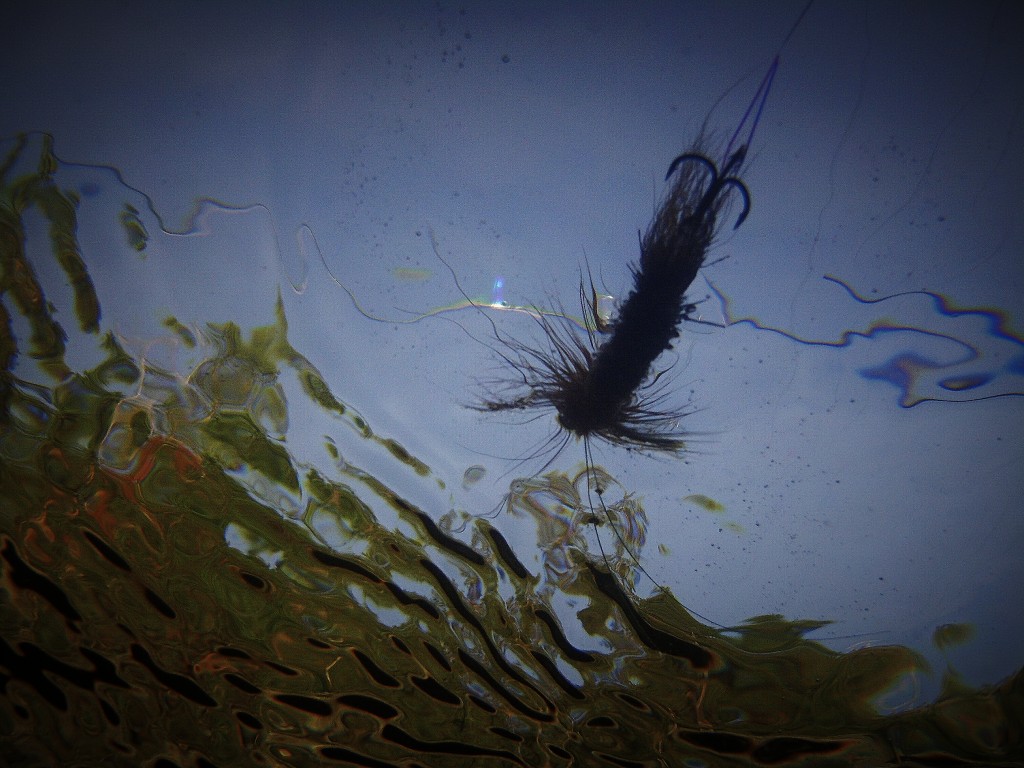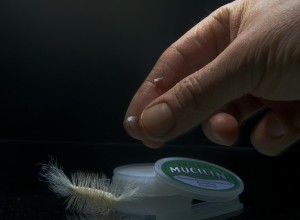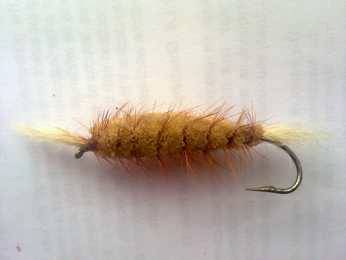-
How to prepare dry fly with silicone
-
Translucent flies are killers
-
Why is deer hair so special
Some of the featuring Newsletter material on this page is also printed elsewhere on this site
Entrapped in the surface…
For 100 million years… more or less – Salmon & trout have practiced the art of hunting insects in the surface… and have become masters of this art. as soon as insects start flying the fish will be scanning the surface for the – footprints – the entrapped animals leave on the surface. It is these insects and their appearance that is the key elements in our fishing… even though insects are tiny and motionless the fish will find them with amazing precision Read more on this:
Preparing a dry fly with silicone
How our artificial flies present themself on the water is of great importance in our fishing… We want the fly to sit in the surface tension. We need the fly to be well impregnated with water-repellent like silicone. Since the late 1940 `s anglers have used silicone products to keep their flies afloat, it comes in many shapes, and we prefer a combination of a liquid solution and a paste version, both containing some silicone…
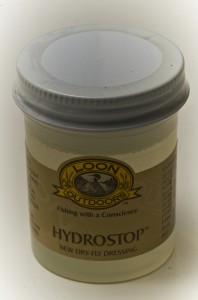
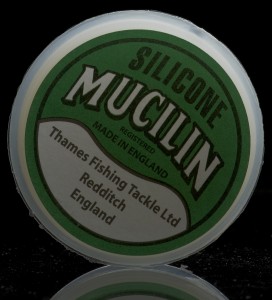
A must-have product in the fly west to prepare your dry fly with silicone, but don´t leave the Mucilin silicone in the back of your car, backpack, or pocket to get boiled in the heat of summer… The silicone easily separates from the past, leaving the product completely useless.
will never notice that the silicone has parted from the paste, and you will be applying a thick white paste that will likely make your fly sink and not float… Mucilin is best kept below 20 Degrees Celsius (68 degrees Fahrenheit) The liquid version of silicone flotant from Loon – Good for ground preparation of a big deer hair dry fly with silicone Buy in our shop.Drowning a dry fly with silicone
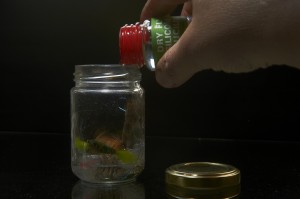 We have used a glass jar for this job. In this way, we will be able to prepare many flies at the same time… Here we use Silicone Mucilin from Thames Fishing Tackle. Hydrostop from Loon is also a product for this job
.
We have used a glass jar for this job. In this way, we will be able to prepare many flies at the same time… Here we use Silicone Mucilin from Thames Fishing Tackle. Hydrostop from Loon is also a product for this job
.
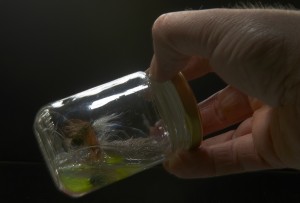 Let the flies soak well for 30 sec… Leave the flies to dry for at least 8 hours.
Let the flies soak well for 30 sec… Leave the flies to dry for at least 8 hours.
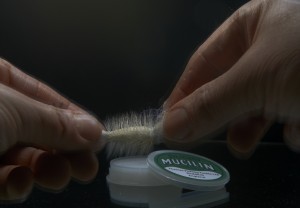 Take care to rub it well into the deer hair structure of the fly – * this will make the flies look somewhat translucent – something fundamental in the world of dry fly fishing
Take care to rub it well into the deer hair structure of the fly – * this will make the flies look somewhat translucent – something fundamental in the world of dry fly fishing
Translucent flies are killers
* Now that we have touched the subject, I might show you something interesting about deer hair.
Many people ask us why we don´t make our Bombers with foam or other floating material. We have tried this with different fly patterns made with; Cork, Balsa-wood, Styrofoam, and EVA Foam, and at some point, I even did a fly with a small glass cylinder, but none of it worked properly, and we soon returned to flies made from deer hair… There do not seem to be any shortcuts on this project…
Why is deer hair so special? First, deer hair (like most other hair material) can naturally attract and deceive trout and salmon… It is like the concept of eating an animal with a pelt isn’t that disagreeable with fish
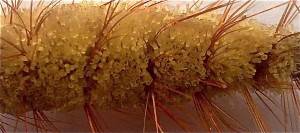 One very special Bomber Belonging to a UK angler I know – This fly has, over time, become very good due to: Wear and tear and multiple coatings of this dry fly with silicone – All adding up to a translucent appearance that’s seemingly attractive to salmon.
One very special Bomber Belonging to a UK angler I know – This fly has, over time, become very good due to: Wear and tear and multiple coatings of this dry fly with silicone – All adding up to a translucent appearance that’s seemingly attractive to salmon.
Formed by dry fly silicone
You and I all have our favourite wet flies in the box. Flies that seem to fish much better than other flies…They might be torn up and dull-looking, but they will produce fish on the bank time after time… It is probably this ruggedness and dull looks that hold the secret to your success with this particular fly; If you take a close look, you will find that the fly has become somewhat altered from usage. It could be little strands of wool coming undone – Hair splitting up from casting and fish teeth tearing at them – fading colours etc. All add up to a more translucent appearance.
Dry flies made with deer hair will also improve with time – If the deer hair becomes hollow! When used over and over again – Something I will try to show through a picture of detail – The detail section is from the image above of the super-Bomber
Note the hollowness of the hairs that gives the fly this see-through appearance … as seen on the close-up of the deer hair body…. By the way, anglers have offered our UK friend much $ for this particular super-fly… It is not for sale…we have been informed.
Don’t get dry fly silicone on your leader
Avoid getting products like Mucilin onto your leader the leader will end up showing up like a neon-sign on the surface – and salmon will stay clear of your fly… A good idea is to prepare the flies with the Mucilin past before your fishing trip. When you have impregnated your flies leave them in a tempered area – so the Silicone can set in the flies and the solvent in the past can evaporate.
☛ Support NASF in rescuing the Atlantic salmon – Go to the NASF page! ☚

